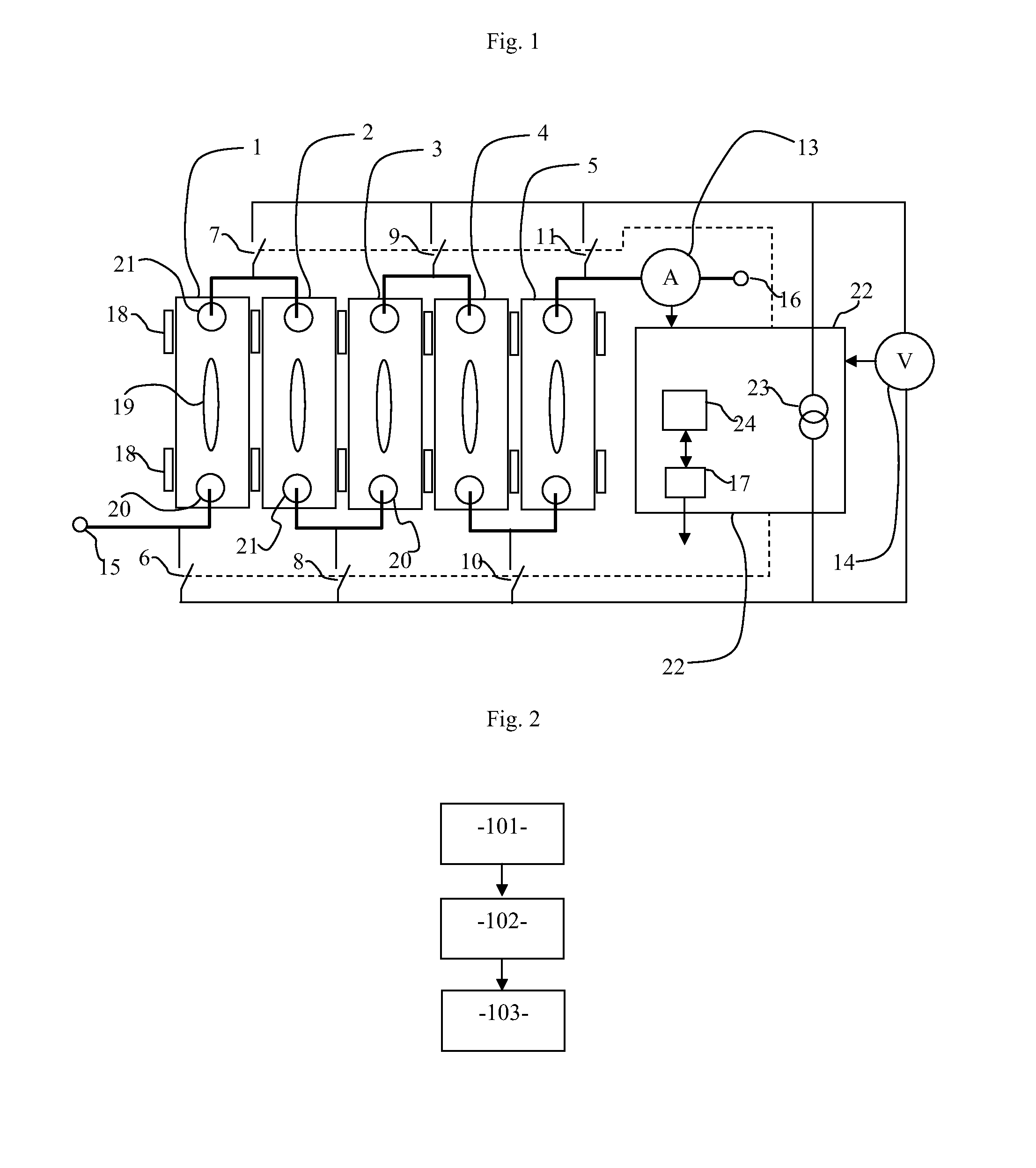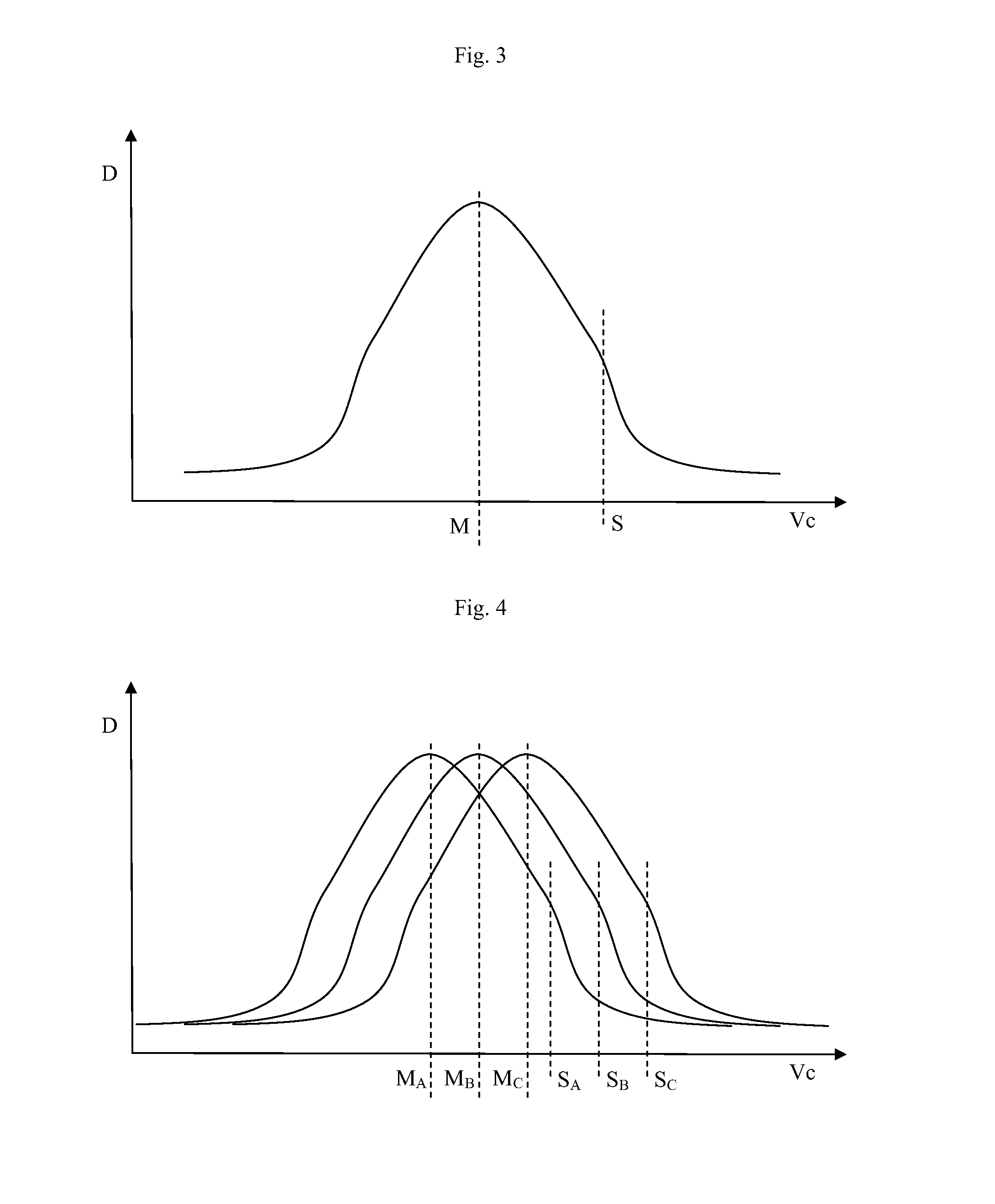Method and device for classifying a battery
a battery and classifier technology, applied in the field of battery classifiers, can solve the problems of battery deterioration, negative consequences for the operation of the vehicle, and the gradual loss of battery performance of the vehicl
- Summary
- Abstract
- Description
- Claims
- Application Information
AI Technical Summary
Benefits of technology
Problems solved by technology
Method used
Image
Examples
Embodiment Construction
[0036]With reference to FIG. 1, a battery is assembled from electrical storage cells 1, 2, 3, 4, 5 between two output terminals 15 and 16. Each electrical storage cell 1, 2, 3, 4, 5 supplies electrical voltage and internal impedance between two contacts points 20 and 21. The electrical storage cells 1, 2, 3, 4, 5 are divided into cell groups in which the cells can be connected in parallel or in series with each other and the cell groups themselves can be connected in series or in parallel with each other.
[0037]In the example illustrated in FIG. 1, contact point 20 of one cell is connected with terminal 15 or with contact point 21 of the preceding cell. Therefore, the battery can be considered to be a group comprising five cells connected in series or five cell groups connected in series with each cell group containing only one cell. An amp meter 13 upstream of terminal 16 measures the current generated by the battery during use. Although in the illustrated example the total number o...
PUM
 Login to View More
Login to View More Abstract
Description
Claims
Application Information
 Login to View More
Login to View More - R&D
- Intellectual Property
- Life Sciences
- Materials
- Tech Scout
- Unparalleled Data Quality
- Higher Quality Content
- 60% Fewer Hallucinations
Browse by: Latest US Patents, China's latest patents, Technical Efficacy Thesaurus, Application Domain, Technology Topic, Popular Technical Reports.
© 2025 PatSnap. All rights reserved.Legal|Privacy policy|Modern Slavery Act Transparency Statement|Sitemap|About US| Contact US: help@patsnap.com



